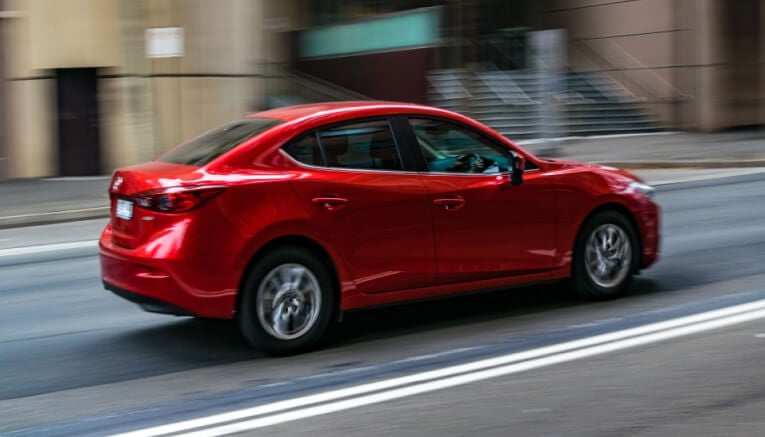For businesses that involve travel to client locations, charging for mileage can be a crucial aspect of maintaining profitability. Whether you’re a consultant, service technician, or home care provider, understanding how to properly charge for your travel expenses is essential for your bottom line.
This article will guide you through the process of implementing mileage charges, from determining when to charge to choosing the right method. By the end, you’ll have a clear understanding of how to fairly compensate yourself or your employees for business-related travel while keeping your customers satisfied.
Related: Mileage Reimbursement Explained | How To Set Up a Mileage Reimbursement Policy for Your Business
Why Should You Charge Your Customers for Mileage?
The primary reason for charging mileage is simple: cost recovery. Every mile driven for business purposes incurs expenses such as fuel, vehicle wear and tear, and depreciation.
By charging for mileage, you ensure that these costs are covered and don’t eat into your profits. This practice allows you to service a wider geographic area without financial penalty.
Charging for mileage also promotes fairness, especially if you have employees who use their personal vehicles for work. It ensures they’re compensated for the use of their personal property in service of the business.
Lastly, implementing mileage charges helps maintain long-term business sustainability. It allows you to price your services more accurately, reflecting the true cost of doing business and helping you stay competitive in your market.
When to Charge Your Customers for Mileage
Determining when to charge mileage often depends on your specific business model and service area. Consider setting a distance threshold beyond which you start charging for mileage, such as after the first 20 miles.
Related: Is Mileage Reimbursement Considered Taxable Income?
Establish clear service area boundaries and communicate them to your customers. Trips outside this area could automatically incur mileage charges.
Special circumstances may also warrant mileage charges, even within your usual service area. These could include rush jobs requiring immediate travel or after-hours service calls.
Be consistent in your policy, but also flexible enough to accommodate loyal customers or large projects. The key is to find a balance between covering your costs and maintaining customer satisfaction.
Methods of Charging Mileage to Your Customers
- Flat Rate: This method involves charging a set fee for travel, regardless of the exact distance. It’s simple to implement and easy for customers to understand, but may not accurately reflect costs for varying distances.
- Per Mile Charge: With this method, you charge a specific rate for each mile driven. It’s more precise but requires accurate mileage tracking.
- Hourly Rate: Instead of distance, you charge for the time spent traveling. This can be beneficial in areas with heavy traffic where a short distance might take a long time.
- Hybrid Approach: This combines elements of the above methods. For example, you might charge a flat rate for the first 20 miles, then a per-mile rate for any additional distance.
Each method has its pros and cons, and the best choice depends on your business needs and customer expectations. Consider testing different methods to find what works best for your situation.
Determining Your Mileage Rate
When setting your mileage rate, consider all vehicle-related costs, including fuel, maintenance, insurance, and depreciation. These factors will help you calculate a rate that ensures you’re not losing money on travel.
Research industry standards in your area to ensure your rates are competitive. You may also choose to use the IRS standard mileage rate, which is 70 cents per mile for 2025.
Related: Standard Mileage Deduction vs. Actual Expenses Method Explained
Remember that the IRS rate is designed to cover all vehicle expenses, so using it as your charging rate may result in overcharging if you’re also separately billing for your time. Consider setting your rate slightly lower than the IRS rate if you’re also charging for travel time.
Regularly review and adjust your mileage rate to account for fluctuations in fuel prices and other costs. This helps maintain fairness for both your business and your customers.

Implementing Mileage Charges
Clear communication is key when implementing mileage charges. Inform your customers about your mileage policy before they book your services.
Include your mileage policy in your service agreements or contracts. This helps avoid misunderstandings and disputes later on.
When invoicing, clearly itemize mileage charges separate from your service fees. This transparency helps customers understand exactly what they’re paying for.
Consider offering bundled pricing for regular clients or large projects, where mileage is included in the overall fee. This can simplify billing and may be more appealing to some customers.
Tracking Mileage Accurately
Accurate mileage tracking is crucial for fair billing and potential tax deductions. Relying on memory or rough estimates can lead to errors and potential disputes with customers.
This is where a mileage tracking app like TripLog comes in handy. TripLog automatically records your trips, providing precise mileage data for each customer visit.
Related: Should You Use a Mileage Tracker App? | Mileage Tracker Introduction
With TripLog, you can easily categorize trips as business or personal, ensuring you only charge for business-related mileage. The app also generates detailed reports, making it simple to transfer mileage data to your invoices.
Accurate tracking not only ensures fair billing but also provides documentation in case of customer inquiries or tax audits. It’s a small investment that can save you time and potential headaches in the long run.
Best Practices for Charging Mileage
Transparency is key when charging for mileage. Clearly explain your mileage policy to customers upfront, including how you calculate charges and any minimum distances or flat rates.
Be consistent in applying your mileage charges. Treating all customers equally helps avoid accusations of unfairness or favoritism.
Regularly review your mileage policy and rates. Factors like fuel prices and vehicle costs can change over time, and your charges should reflect these changes.
Consider offering alternatives to mileage charges, such as video consultations for initial meetings or bundled pricing for regular clients. This flexibility can help you retain cost-conscious customers while still covering your expenses.
Legal and Tax Considerations
It’s important to understand that mileage charges are considered part of your business income and are therefore taxable. Include these charges in your reported income to stay compliant with tax regulations.
On the flip side, as a business owner, you can deduct business-related mileage on your taxes. The IRS allows you to choose between deducting actual vehicle expenses or using the standard mileage rate.
Related: IRS Mileage Commuting Rule: What Businesses Need To Know
If you use the standard mileage rate for tax deductions, you cannot also deduct actual vehicle expenses like maintenance, insurance, or depreciation. Choose the method that provides the largest deduction for your situation.
Keep detailed records of your business mileage, whether you charge customers for it or not. These records are crucial for accurately reporting your income and claiming deductions.
Charging Customers for Mileage: Conclusion
Charging for mileage is an important aspect of maintaining a profitable business, especially if travel is a significant part of your services. By implementing a fair and transparent mileage policy, you can recover your travel costs while maintaining positive customer relationships.
Remember to choose a charging method that fits your business model, set appropriate rates, and use reliable tracking tools like TripLog to ensure accuracy. You can download TripLog for free on iOS or Android today!







